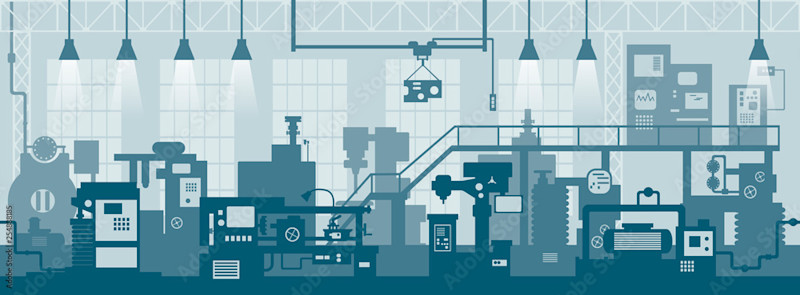So, now you know the basics about machining centers thanks to yours truly (and maybe some additional sources if it piqued your interest). Where to next? Well, today we’re diving into the term that gave me the biggest run for my money at the beginning of my manufacturing career: additive.
Now, I want to clarify something before jumping into the definition of additive. Some people are probably seething at my use of just the word “additive” and not “additive manufacturing.” But in my first two weeks at AMT back in 2021, no one was calling it additive manufacturing – just additive. So, forgive me if this upsets you, but that is how I learned, and, therefore, how I teach.
All right. Now that we have that out of the way, let’s jump into all things additive. The history of additive is as old as “The Empire Strikes Back”; that is, they both can be traced back to 1980. Now, I have no idea if Han Solo being frozen in carbonite gave someone a stroke of genius, but according to the timeline compiled by ASME, the first 3D printing patent was filed in 1980, but it didn’t get commercialized.
Then, in 1986, Charles Hull was granted the first patent for a stereolithography (SLA) machine after filing for it in 1984. Change came rapidly after that, with new developments arriving nearly every year. Then, in 1989, the patent for fused deposition modeling (FDM) was filed by Lisa and Scott Crump (Scott would go on to co-found Stratasys Inc., which still holds the patent for FDM). Developments would continue every year after this, with the next big event coming in 1997, when Aeromat produced the first 3D printed metal process, and has continued to boom ever since. Keep in mind: This is a very condensed version of just one piece of additive history.
So, based on all this, you are probably thinking, “Elissa, additive is just 3D printing.” I know, I know. It seems like that. And to be fair, most people use them interchangeably. And while they are not wrong, they are not 100% right either. MIT’s Sloan School defines additive manufacturing as “the process of creating an object by building it one layer at a time. It is the opposite of subtractive manufacturing, in which an object is created by cutting away at a solid block of material until the final product is complete.” But some would argue – me included – that the reason that additive and 3D printing are not entirely interchangeable is that additive also includes a subtractive process.
OK, I can feel you rolling your eyes and blowing smoke out of your ears like a cartoon. What I mean is that while 3D printing is the printing of the object, additive is more. The simplest and best analogy I have to describe 3D printing is Lego bricks. Say you have a bag of all the same kinds of bricks (blue, yellow, red, whatever – that is between you and your imagination). To build something, you lay one down, place another one directly on top of it, and press it into place. You keep doing this until you have the result you want. Or, if you want a slightly more advanced metaphor, think of welding. You start with a piece of metal and use heat from a torch to join one piece to the next until you have a completed project.
Additive is the same principle: You layer pieces on top of one another or join them until you complete your finished product. However, as anyone who has 3D printed a part can attest, there are pieces or parts that aren’t meant to be on the finished product – supports, textures, whatever. So, what do you do? You sand it down like you would a woodworking project to get the desired smooth edges – a subtractive process! Or for people with a little more experience in the industry, think about castings and how you always must remove material to achieve the final, functional shape.
I hope that helped you stop fuming and made you reconsider coming at me like Wile E. Coyote. There is a method to my madness!
Now, while we all know additive has been booming in manufacturing lately, we should still take a hot second to discuss how it affects our industry today. To be blunt: It has been game changing. Not only has it revolutionized medical manufacturing (and medicine in general), but it is also being used in all branches of the U.S. military; it’s solving reshoring problems; and it’s also mentioned in episodes of “Law and Order” and “CSI” (NBD, just a manufacturing celebrity – see you at their Hollywood Walk of Fame ceremony).
Additive is everywhere, and it isn’t going anywhere. It covers a wide breadth of material types (thermo-plastic polymers, metals, powders) and processes. In fact, because additive is so comprehensive and diverse, we here at AMT are partnering with Mesago Messe Frankfurt and Gardner Business Media to bring Formnext (the first – and largest – additive manufacturing trade show) to the United States! Formnext Chicago will showcase the entire additive production process, from design to materials to production and post-processing. And in a few short weeks, IMTS 2024 will open, where visitors can see the latest in additive technology at the Additive Sector, accelerated by Formnext.
Between news articles, think pieces, and breakthroughs, it may sound like additive is reaching its peak. Well, in my humble opinion, additive will continue to grow. Come see it for yourself at IMTS 2024 on Sept. 9-14 and at next year’s Formnext Chicago, April 8-10, both at McCormick Place. You’ll be able to say, “I knew it (additive manufacturing) when.”
I hope this saved you a Google. See you next time, when we talk about metrology!





